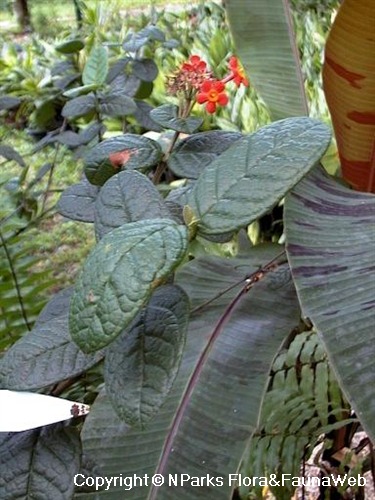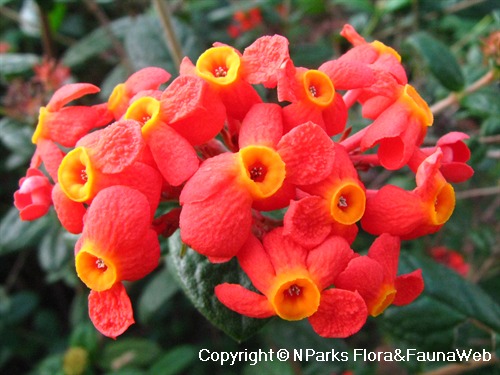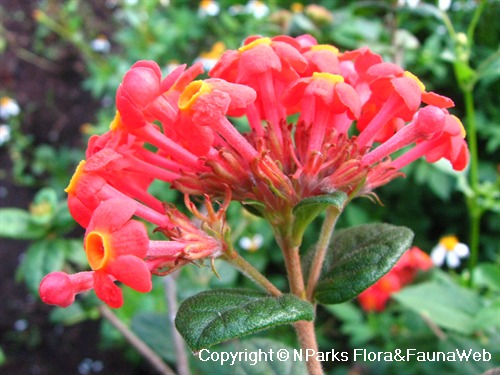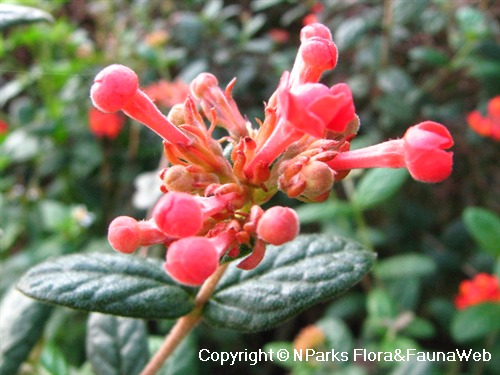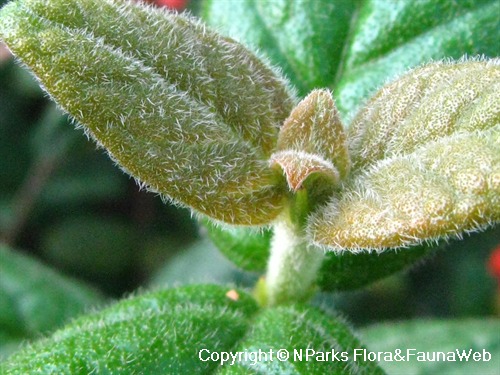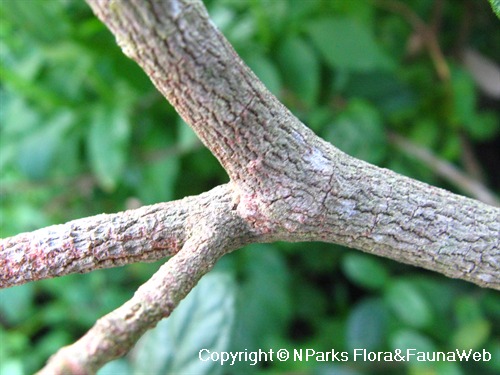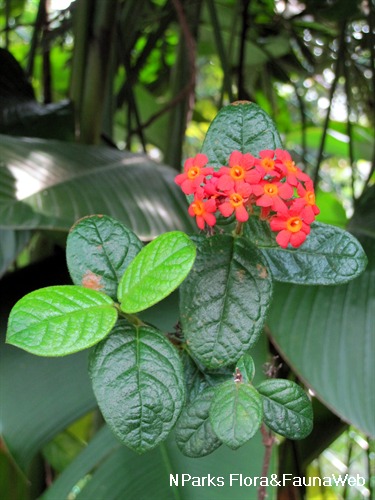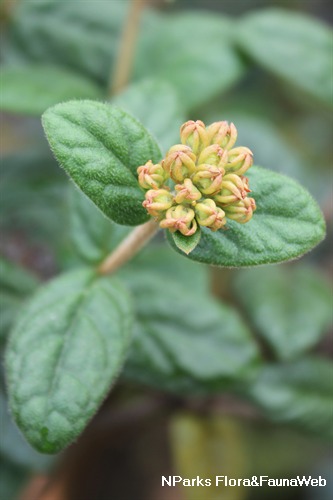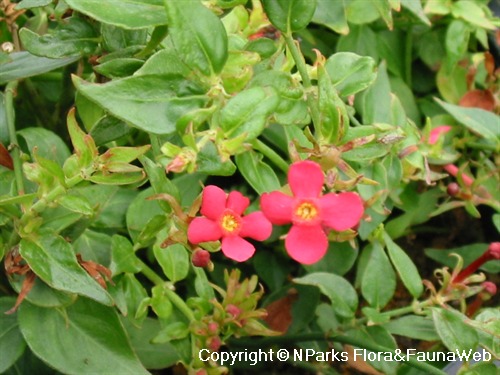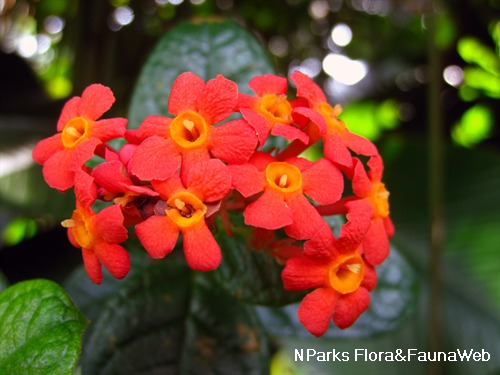
Back
Rondeletia odorata
| Family Name: | Rubiaceae |
| Synonyms: | Rondeletia speciosa |
| Common Name: | Fragrant Rondeletia, Fragrant Panama Rose, Sweet Smelling Rondeletia, 郎德木 |
Name
Classifications and Characteristics
| Plant Division | Angiosperms (Flowering Seed Plants) (Dicotyledon) |
|---|---|
| Plant Growth Form | Shrub |
| Lifespan (in Singapore) | Perennial |
| Mode of Nutrition | Autotrophic |
| Plant Shape | Shrubby |
Biogeography
| Native Distribution | West Indies, Panama and Cuba |
|---|---|
| Native Habitat | Terrestrial |
| Preferred Climate Zone | Tropical |
| Local Conservation Status | Non-native (Horticultural / Cultivated Only) |
Description and Ethnobotany
| Growth Form | Evergreen shrub, able to grow up to 1.5 - 2 m tall. Despite the name, the flowers are not very fragrant. It was said that the most fragrant part of the plant is the root. |
|---|---|
| Foliage | Opposite to decussate leaves, ovate to oblong, wavy margins, measuring about 2 - 5 by 1 - 3.5 cm. Leaf blades thick and leathery, apex rounded to acute while base obtuse to subcordate. Interpetiolar stipules are triangular. |
| Stems | Slender pubescent branches. |
| Flowers | Red to dark red flowers, cyme inflorescences, terminal, many-flowered, corolla bright red with rounded lobes and a yellow throat. |
| Fruit | Fruit capsules globose to depressed globose and measuring about 3 - 4 mm in diameter. Fruit splits into 2 valves, showing numerous minute seeds. |
| Taxonomy | Genus Rondeletia is named after French physician and aquatic bologist Guillaume Rondelet (1507 - 1566). |
| Cultivation | Plant in well-drained soil under full sun and moderate watering. The flowers bloom best under full sun. |
| Etymology | The genus Rondeletia is named in honour of Guillaume Rondelet, a French physician and aquatic biologist. The specific epithet odorata means fragrant. |
Landscaping Features
| Desirable Plant Features | Ornamental Flowers, Fragrant (Flowers, Roots) |
|---|---|
| Landscape Uses | Container Planting, Parks & Gardens, Small Gardens |
Fauna, Pollination and Dispersal
| Fauna Pollination Dispersal Associated Fauna | Butterfly-Attracting |
|---|
Plant Care and Propagation
| Light Preference | Semi-Shade, Full Sun |
|---|---|
| Water Preference | Moderate Water |
| Rootzone Tolerance | Moist Soils, Well-Drained Soils |
| Propagation Method | Seed, Stem Cutting |
Foliar
| Foliage Retention | Evergreen |
|---|---|
| Mature Foliage Colour(s) | Green |
| Mature Foliage Texture(s) | Leathery, Thick |
| Prominent Young Flush Colour(s) | Green |
| Young Flush Texture(s) | Leathery, Raised / Sunken Veins |
| Foliar Modification | Stipule |
| Foliar Type | Simple / Unifoliate |
| Foliar Arrangement Along Stem | Opposite |
| Foliar Attachment to Stem | Petiolate |
| Foliar Shape(s) | Non-Palm Foliage (Ovate, Oblong) |
| Foliar Venation | Pinnate / Net |
| Foliar Margin | Entire |
| Foliar Apex - Tip | Acute, Rounded |
| Foliar Base | Rounded / Obtuse |
| Leaf Area Index (LAI) for Green Plot Ratio | 4.5 (Shrub & Groundcover - Dicot) |
Floral (Angiosperm)
| Flower & Plant Sexuality | Bisexual Flowers |
| Flower Colour(s) | Red, Orange |
|---|---|
| Flower Grouping | Cluster / Inflorescence |
| Flower Location | Terminal |
| Flower Symmetry | Radial |
| Inflorescence Type | Cyme |
Fruit, Seed and Spore
| Fruit Classification | Simple Fruit |
|---|---|
| Fruit Type | Dehiscent Dry Fruit , Capsule |
| Seed Quantity Per Fruit | Numerous (>20) |
Image Repository
Others
| Master ID | 1099 |
|---|---|
| Species ID | 2392 |
| Flora Disclaimer | The information in this website has been compiled from reliable sources, such as reference works on medicinal plants. It is not a substitute for medical advice or treatment and NParks does not purport to provide any medical advice. Readers should always consult his/her physician before using or consuming a plant for medicinal purposes. |

